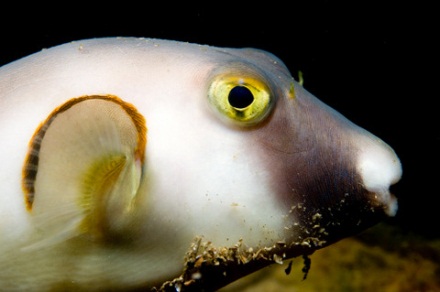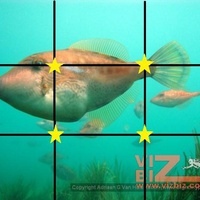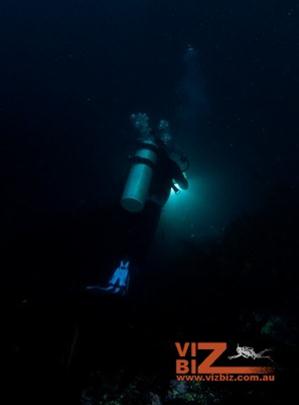Tips and tricks
Adriaan van Huissteden.
Adriaan van Huissteden has been free diving and scuba diving for the past 15 years. In his underwater photography, Adriaan tries to capture what some people will never see. He says that it can be challenging at times, but it is always very rewarding. We asked Adriaan for a few tips on underwater photography.
Tip 1: Position a point of interest along a line of thirds.
Underwater photography is very rewarding, and with a camera, an underwater housing, a few tips and lots of practice, you can soon be sharing what you see with friends, family and of course, Redmap. Many cameras have underwater housings available, whether you have a simple point and shoot or a professional digital SLR camera. Often the camera is not the limiting factor to great shots, but rather the lighting system. Large amounts of light are required to show the true colour of your subject or scene.
Practise at home in a dimly lit room with the camera in the housing; get to know where all the buttons are, how to turn the flash on and off, and how to turn macro mode on and off. Make sure you are comfortable with your diving skills and buoyancy. Using a camera can be very distracting, and it can be easy to crash into the reef or another divers, or worse, float to the surface without knowing it.
Always ensure you follow the instructions on how to clean, seal and open your housing. It could save you from flooding your housing and wrecking your camera. If you ever experience a leak while under water, hold your camera with the lens pointing down and do a normal safe ascent.
There are two basic types of underwater photography – macro and wide angle.
Macro
Use Macro for subjects generally within a metre and it is a good idea to have the flash set to ON so that it will fire with every shot you take. Water reduces colour, contrast, and sharpness. If the subject has eyes, make sure the eyes are in focus.
- Take your time if you can.
- Test the macro range with small objects and see how the pictures turn out. You might need to use a small torch to help your camera focus in low light or night-time conditions.
- Try not to centre your subject, rather fill the frame or position a point of interest along a line of thirds.
- Try not to use any zoom, as it affects how closely you can focus; rather, move the camera closer if you can without scaring your subject.
- Try to get low, at eye level.
 |
Tip 2: Position a point of interest along a line of thirds (like this striking head) and try to get at eye level. Focus on the eyes.
Wide angle photos
Wide angled photography can be a bit more of a challenge. Unless you have a large underwater strobe or two, turn your flash off and use ambient light. Using the flash will result in what is called backscatter, where the light from your flash will light up all the particles in the water.
- Focus at the eyes.
- Try to get a photo of the subject facing you.
- Take several photos.
- An external flash (known as a strobe) reduces this by changing the angle of the reflection off the particles as it is extended away from the lens of the camera by a long arm. Your pictures may turn out with a blue tinge, but you can add some colour back at the computer. Alternatively, if your camera has a white balance setting, learn how to use it to get some colour back into your images.
- Use auto, aperture priority, or full manual mode, depending on your comfort level with camera settings.
Tip 3: Having another diver in the scene can add to the depth of your image.
A few general tips
- Night diving can be a great way to get close to subjects that would normally swim away from you.
- Join an underwater photography forum such as wetpixel.com and share your pictures with others to get tips and tricks.
- Dive with other underwater photographers.
- Having another diver in a scene can add to the depth of your image.
- Find a spot close to home with easy access to shore dive and practise.
If you would like to contact me for some more information, please email adriaanvh@gmail.com or check out my photo gallery at www.VizBiz.com.au or look for VizBiz on Facebook too.
All images courtesy of Adriaan van Huissteden.













